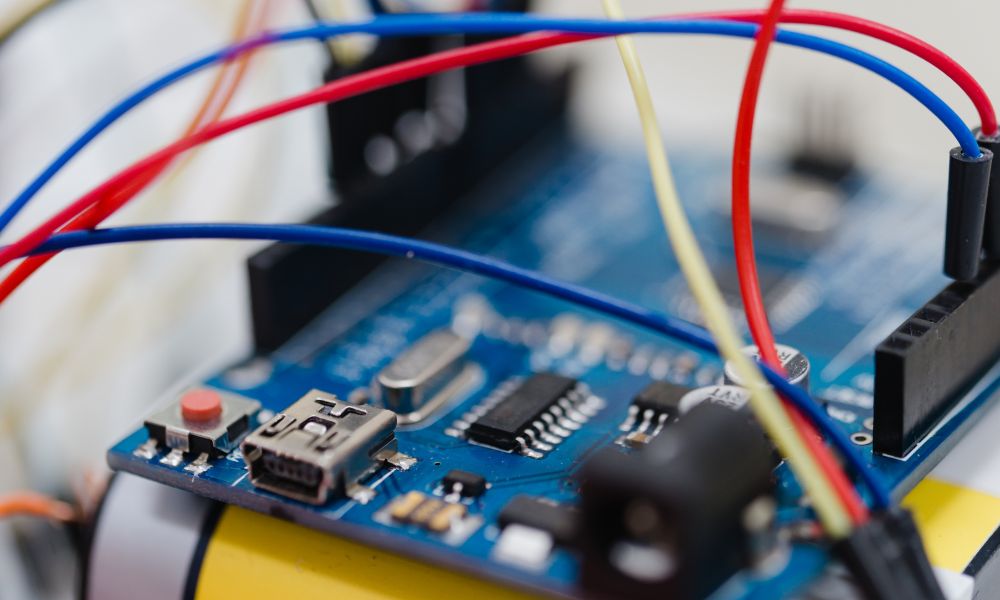In the digital age, where data is the lifeblood of businesses and homes alike, having a robust and reliable network infrastructure is non-negotiable. The foundation of this connectivity lies in structured cabling systems. Beyond the visible wires and connectors, a well-designed structured cabling system ensures seamless data transmission, efficient communication, and effortless scalability. In this comprehensive guide, we’ll unravel the intricacies of structured cabling systems, their significance, components, installation best practices, and why NT Security USA stands as your premier partner in building cutting-edge network infrastructures.

Understanding Structured Cabling Systems: More Than Just Wires
Structured cabling systems are the backbone of modern connectivity. Unlike traditional point-to-point cabling, structured cabling systems are designed with a systematic approach, organizing and managing the network infrastructure in a way that ensures flexibility, reliability, and ease of maintenance. Here’s why structured cabling systems are crucial:
1. Streamlined Connectivity:
Structured cabling organizes various network elements such as computers, phones, and other devices into a unified system. This organization simplifies connectivity, making it easier to add, move, or modify devices without disrupting the entire network.
2. Scalability:
Businesses and homes evolve, and so do their connectivity needs. Structured cabling systems are designed to scale seamlessly. New devices and technologies can be integrated without the need for extensive rewiring, saving time and resources.
3. Simplified Troubleshooting:
In the event of network issues, structured cabling simplifies the troubleshooting process. The organized layout and labeling of cables enable IT professionals to pinpoint and resolve problems swiftly, minimizing downtime.
4. Higher Performance:
Structured cabling systems support high-speed data transmission. This ensures that businesses can handle large volumes of data, support bandwidth-intensive applications, and maintain optimal performance, even during peak usage.

Components of Structured Cabling
Structured cabling consist of various components, each playing a specific role in creating a seamless network infrastructure:
1. Cables:
- Ethernet Cables (Cat5e, Cat6, Cat6a, Cat7, Cat8): Used for data and voice transmission, these cables support different data speeds and distances.
- Fiber Optic Cables: Ideal for high-speed, long-distance data transmission using light signals.
2. Patch Panels:
Central points where all cables terminate. Patch panels organize and label cables, making it easy to connect devices.
3. Switches:
Devices that connect multiple devices within a LAN. Switches facilitate communication between devices within the same network.
4. Routers:
Devices that connect different networks. Routers enable communication between devices in different LANs or WANs.
5. Cabinets and Racks:
Enclosures used to house servers, switches, patch panels, and other networking equipment. Cabinets and racks ensure proper ventilation and organization.

===> Learn more: Elevate Your Home Network: The Ultimate Guide to Ethernet Installation at Home
Structured Cabling System Installation Best Practices
Proper installation is crucial for maximizing the benefits of a structured cabling system. Here are some best practices:
1. Detailed Planning:
- Conduct a site survey to understand the layout and connectivity needs.
- Plan cable routes, avoiding interference and minimizing cable lengths for optimal signal integrity.
2. High-Quality Materials:
Invest in high-quality cables, connectors, and networking devices. Quality materials ensure durability and optimal performance.
3. Professional Installation:
Hire certified professionals for installation. Experienced technicians ensure proper cable routing, termination, and organization, adhering to industry standards.
4. Documentation and Labeling:
Label cables and document their routes and connections. Proper documentation simplifies troubleshooting and future modifications.

Why Choose NT Security USA for Your Structured Cabling System Needs
At NT Security USA, we excel in providing expert structured cabling system services tailored to your unique requirements. Here’s why we are your ideal choice for building a state-of-the-art network infrastructure:
1. Industry Expertise:
Our team comprises certified professionals with extensive experience in structured cabling system design and installation. We adhere to industry standards, ensuring reliable and efficient installations.
2. Customized Solutions:
We understand that every business or home network is unique. Our experts conduct a detailed analysis of your needs and design tailored structured cabling solutions that align with your goals and budget.
3. Cutting-Edge Technology:
We stay updated with the latest technological advancements in networking. By integrating cutting-edge solutions into your structured cabling system, we ensure you benefit from the most innovative and efficient connectivity options available.
4. Comprehensive Support:
Beyond installation, we offer ongoing support and maintenance services. Our team is readily available to assist with any issues, ensuring your structured cabling system operates flawlessly.


